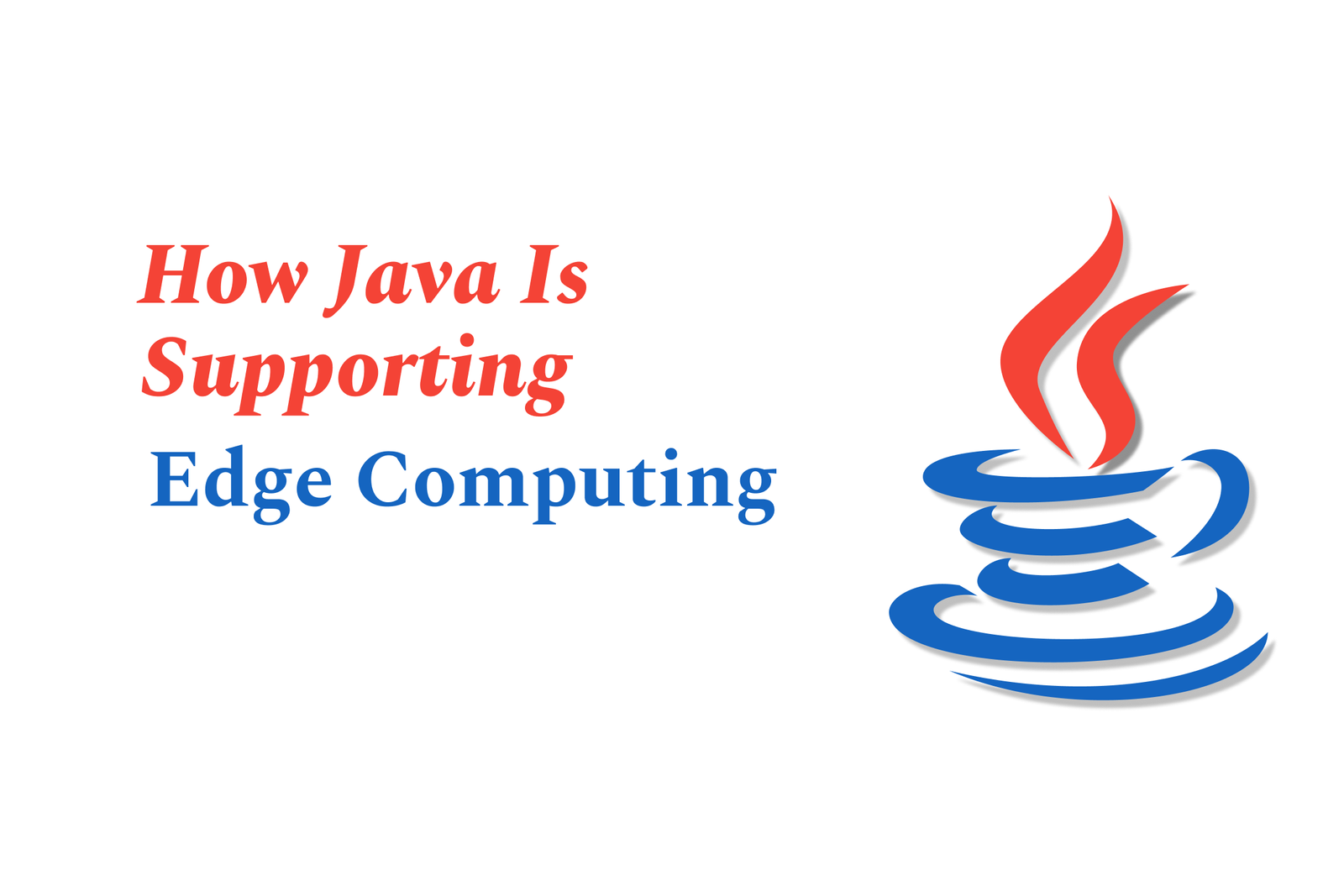How Java is Supporting Edge Computing
Java supports edge computing by providing a platform-independent, robust environment for developing and managing IoT edge applications. Its rich ecosystem, OSGi frameworks, and tools enable efficient device connectivity, real-time data processing, and seamless cloud integration across diverse hardware.
How Java Is Supporting Edge Computing
1 ) Introduction to Edge Computing and Java’s Role
Edge Computing processes data near the data source, reducing bandwidth between sensors and data centers.
IoT edge gateways act as aggregators/controllers running enterprise software stacks, forming the foundation of Edge Computing.
Java, through frameworks and platforms, significantly facilitates development, deployment, and management in the edge environment.
2 ) Eurotech’s Everyware Software Framework (ESF) – A Java/OSGi Edge Platform
ESF is a commercial enterprise ready platform based on Eclipse Kura (open source Java/OSGi platform).
Enhances Kura with extended security, diagnostics, provisioning, remote access, and integration with Eurotech’s cloud services.
Allows development and management of IoT edge computing applications with strong connectivity to devices and cloud services.
Supports visual data flow composition to manage, analyze, and route data at the edge easily.
Portability across hardware architectures is enabled by Java/OSGi, supporting dynamic updates and preventing vendor lock in.
3 ) Key Functional Areas of ESF Leveraging Java
Connect to Field Devices:
Simplifies communication by encapsulating protocols like Modbus, OPC UA into a common format.
Automatically creates digital device images for easy gateway cloud interaction.
Offers APIs for serial communication (RS232/485 ), Bluetooth variants, USB, CAN Bus, all accessible via Eclipse Marketplace IoT.
Develop IoT Computing Applications:
ESF acts as an application container running Java based OSGi bundles.
Provides rich Java APIs for data acquisition, processing, cloud connectivity, and remote management.
Features a visual programming tool “Wires” to design data pipelines by dragging and wiring components.
Connect to IoT Cloud Services:
Seamlessly integrates edge applications with cloud platforms, simplifying the data lifecycle from edge to cloud.
4 ) Java’s Cross Platform Strength & Performance in Edge Computing
Java’s promise of Write Once, Run Anywhere is crucial due to heterogeneous environments (e.g., Intel, ARM, RISC V architectures).
Java Virtual Machines (VMs) have improved performance steadily, providing efficient out of the box processing capabilities.
Innovations like TornadoVM allow Java code execution to leverage multi core CPUs, GPUs, and FPGAs—enhancing edge computing performance.
Projects like GraalVM improve both cross platform operation and language interoperability, broadening Java’s applicability in IoT and edge scenarios.
5 ) Conclusion
Java’s platform independence, mature ecosystem, and ongoing performance enhancements make it ideally suited for edge computing.
Frameworks such as ESF build on Java’s strengths to provide robust, secure, and scalable solutions for managing edge devices and applications.
Java thus supports the evolving landscape of IoT and edge computing by enabling flexible, high performance, and portable application development.
https://justacademy.in/news-detail/react-native-expo-sdk-updates-announced
https://justacademy.in/news-detail/government-apps-built-using-flutter
https://justacademy.in/news-detail/flutter-hackathons-&-winners-in-2025
https://justacademy.in/news-detail/android-app-developer-conference-highlights
https://justacademy.in/news-detail/desktop-apps-in-flutter:-pros-and-cons
Related Posts
In 2025, top Angular libraries offer modern, feature-rich components and tools for building dynamic web apps. From powerful data grids to low-code platforms like UI Bakery, these libraries enhance development speed, UI design, and scalability, making them essential for Angular developers.
Migrating from AngularJS to Angular 17 involves gradually upgrading your app by running both frameworks together using tools like ngUpgrade, rewriting components in TypeScript, and adopting Angular’s modern architecture to enhance performance, maintainability, and long-term support.
Angular state management tools help organize and handle app data efficiently, improving scalability and maintainability. Popular options include NgRx for robust, RxJS-based patterns, and newer Signal Store solutions that offer simpler, reactive approaches integrated tightly with Angular’s latest features.
RxJS in Angular empowers developers to manage asynchronous data streams with powerful operators like `forkJoin`, `combineLatest`, and `zip`. Mastering these key operators in 2025 is essential for building efficient, reactive applications that handle complex event sequences seamlessly.
Angular performance optimization in 2025 focuses on improving app speed and responsiveness by using techniques like OnPush change detection, lazy loading, efficient data caching, and AOT compilation. These practices reduce load times, enhance user experience, and ensure scalable, fast Angular applications.
In 2025, Angular remains preferred for large-scale, enterprise apps with its robust, all-in-one framework, while Vue attracts developers seeking simplicity and fast development for smaller projects. Both frameworks excel, with choice driven by project needs and team expertise.
Angular Signals are a new reactive primitive in Angular 16 that enable fine-grained, efficient change detection by automatically tracking dependencies and updating only affected parts of the UI. They simplify state management and boost app performance, revolutionizing Angular's reactivity model.
Angular interview questions to prepare in 2025 focus on core concepts like components, directives, data binding, routing, and dependency injection, along with TypeScript mastery and latest Angular features to ensure strong practical knowledge for building scalable, efficient web applications.
AngularJS reached its official end of support in January 2022, meaning no further updates or security patches. To ensure app security and performance, developers should consider migrating to modern Angular versions or seek third-party long-term support options if immediate migration isn’t possible.
The Angular Roadmap 2025 highlights upcoming features focused on improving developer experience and performance, including zoneless Angular, Signals integration, enhanced Forms, async data handling, improved HMR, and expanded Angular Material/CDK enhancements, driving modern, efficient web app development.










